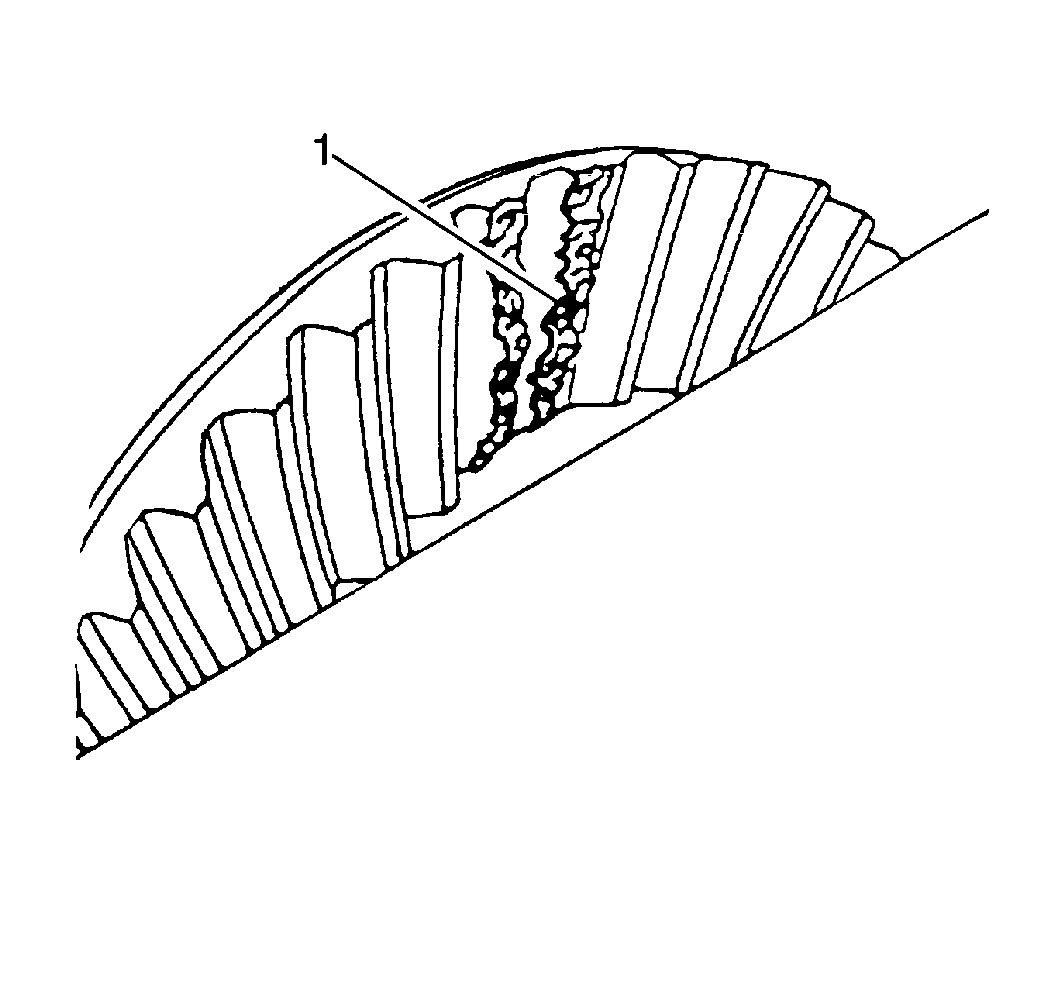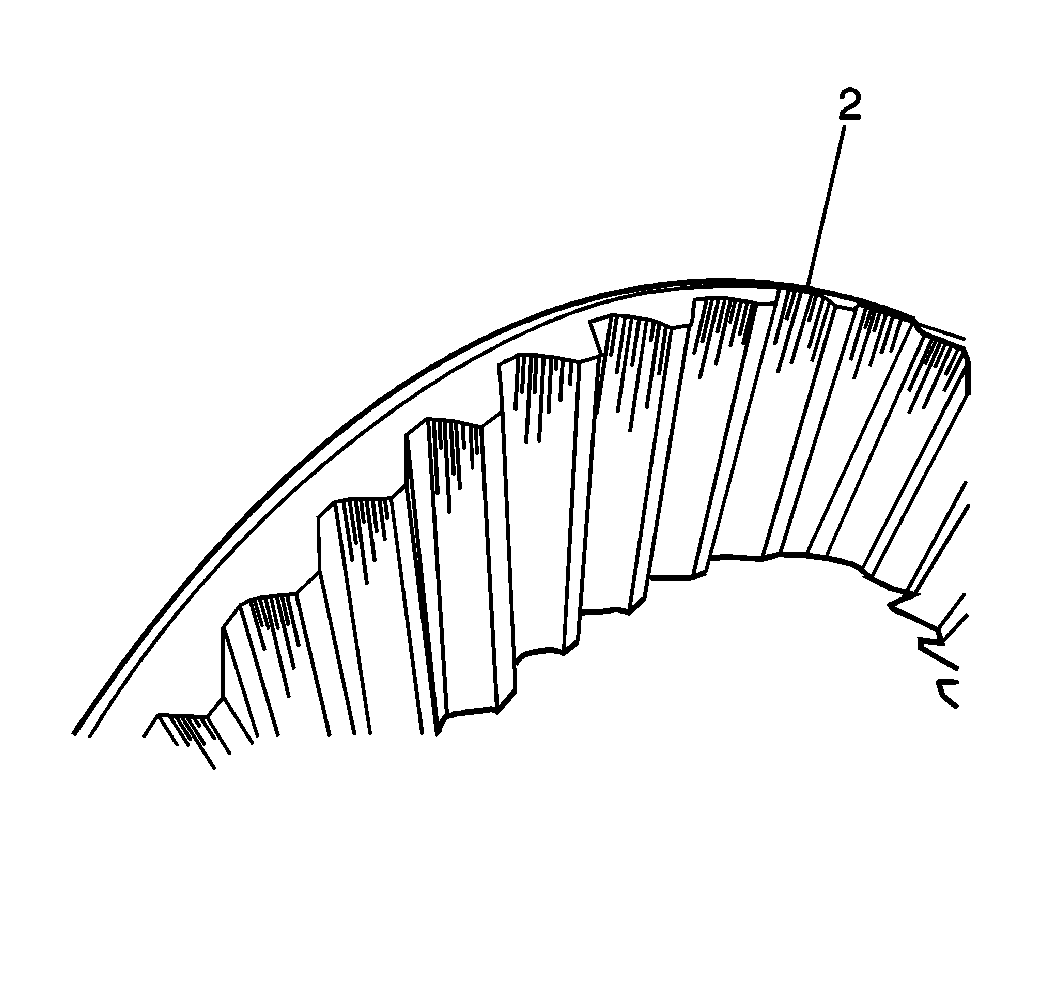Rear Axle Noise
The proper diagnosis is an important part of the rear axle repair. One of the
most difficult conditions to diagnose is noise. Locating a broken axle shaft
or broken differential gear presents little or no problem. Locating and isolating
axle noise can be an entirely different matter.
Any gear driven unit, especially an automotive drive axle where the engine
torque multiplication occurs at a 90 degree turn in the driveline, produces
a certain amount of noise. Therefore, an interpretation must be made for each
vehicle in order to determine whether the noise is normal or if a problem actually
exists. A certain amount of noise must be expected and cannot be eliminated
by conventional repairs or adjustment.
Normal axle noise can be described as a slight noise heard only at a certain
speed or under unusual or remote conditions. For example, the noise tends to
reach a peak at speeds from 60-100 km/h (40-60 mph)
depending on the road and the load conditions, or on the gear ratio and the tire
size. This slight noise is in no way indicative of trouble in the axle assembly.
Driveline noises may confuse even the best technician. Vehicle noises coming
from the following components are often mistaken for axle noise:
| • | The front wheel bearings |
| • | The rear wheel bearings |
Such practices as raising tire pressure in order to eliminate tire noise
(although this will not silence tread noise of mud and snow tires), or listening
for the noise at varying speeds and road surfaces (drive, float, and coast conditions),
will aid in locating the source of alleged axle noises. Every effort should be
made in order to isolate the noise to a specific driveline component instead
of a making random guess that could be a costly waste of time.
External Noise
Noise which seems to be coming from the rear axle may actually be produced
somewhere else. Determine whether the noise might originate in the locations:
| • | The front wheel bearings |
Road Noise
Driving on certain road surfaces, such as brick or rough-surfaced concrete,
causes noise which may be mistaken for tire or rear axle noise. Driving on a
different type of road, such as smooth asphalt or dirt, will quickly show whether
the road surface is the cause of noise. Road noise usually is the same in drive
as in coast.
Tire Noise
Tire noise can easily be mistaken for rear axle noise, even though noisy tires
may be located on the front wheels. Tires worn unevenly, or having surfaces on
non-skid divisions worn in sawtooth fashion, are usually noisy and may produce
vibrations which seem to originate elsewhere in the vehicle. This is particularly
true with low tire pressure.
Tire Noise Test
Tire noise changes with different road surfaces, but rear axle noise does not.
Temporarily inflating tires to 345 kPa (50 psi) pressure, for test
purposes only, will materially alter noise caused by tires but will not affect
noise caused by the rear axle. Rear axle noise usually stops when coasting at
speeds under 50 km/h (30 mph) ; however, tire noise continues but
with lower tone as the vehicle speed reduces. Rear axle noise usually changes
when the tire pulls in a forward direction or when the vehicle coasts down
the road and the tire noise remains about the same.
Engine and Transmission Noises
Sometimes a noise which seems to originate in the rear axle is actually caused
by the engine or the transmission. In order to determine which unit is actually
causing the noise, observe the approximate vehicle speeds and the conditions
under which the noise is the most pronounced. Then, stop the vehicle in a quiet
place in order to avoid interfering noises. With the transmission in neutral,
run the engine slowly up and down through the engine speeds corresponding to
the vehicle speed at which the noise was most pronounced. If a similar noise
is produced with the vehicle standing, the noise is caused by the engine or the
transmission and not the rear axle.
Front Wheel Bearing Noise
Worn or rough front wheel bearings will cause noise which you may confuse with
rear axle noise. However, front wheel bearing noise does not change when comparing
the pull and the coast conditions. Light application of the brake, while holding
the vehicle speed steady, will often cause the wheel bearing noise to diminish,
since this takes some weight off the bearing. Front wheel bearings may be easily
inspected for noise by jacking up the wheels and spinning the wheels. Also inspect
the wheels by shaking the wheels to determine if the bearings are excessively
worn.
Body Boom Noise or Vibration
Objectionable body boom noise or vibration at 90-100 km/h (55-65 mph)
can be caused by an unbalanced propeller shaft. Excessive looseness at the spline
can contribute to this unbalance.
Other items that may also contribute to the noise problem are as follows:
| • | Undercoating or mud on the shaft, causing unbalance |
| • | Shaft or companion flange balance weights missing |
| • | Shaft damage, such as bends, dents, or nicks |
| • | Rough tires (Switch the tires from a known good vehicle in order to determine
a tire fault.) |
If after making a comprehensive check of the vehicle, all indications point
to the rear axle, further diagnostic steps are necessary in order to determine
the axle components at fault. True rear axle noise generally falls into 2 categories;
gear noise and bearing noise.
Rear Axle Noise
If a careful test of the vehicle shows that the noise is not caused by external
items, it is then reasonable to assume that noise is caused by the rear axle
assembly. Test the rear axle on a smooth level road in order to avoid road noise.
It is not advisable to test the rear axle for noise by running the vehicle with
the rear wheels jacked up.
Noise in the rear axle assembly may be caused by 1 of the following conditions:
| • | A faulty propeller shaft |
| • | Faulty pinion shaft bearings |
| • | A misalignment between 2 U-Joints |
| • | Worn differential side gears and pinions |
| • | A mismatched ring and pinion gear set |
| • | An improperly adjusted ring and pinion gear set |
| • | A scored ring and pinion gear set |
Rear Wheel Bearing Noise
A rough rear wheel bearing produces a vibration or growl which continues with
the vehicle coasting and the transmission in neutral. A brinelled rear wheel
bearing causes a knock or click, approximately every 2 revolutions of the rear
wheel, since the bearing rollers do not travel at the same speed as the rear
axle and wheel. With the rear wheels jacked up, spin the rear wheels by hand
while listening at the hubs for evidence of a rough or brinelled wheel bearing.
Differential Side Gear and Pinion Noise
Differential side gears and pinions seldom cause noise since the movement is
relatively slight on straight ahead driving. Noise produced by these gears will
be most pronounced on turns.
You can determine pinion bearing failures by how the bearings rotate at higher
speeds as opposed to the differential side bearings and the axle shaft bearings.
Rough or brinelled pinion bearings produce a continuous low-pitched whirring
or scraping noise starting at a low speed.
Side bearings produce a constant rough noise pitched lower than pinion bearing
noise. Side bearing noise may also fluctuate in the previous rear wheel bearing
test.
Gear Noise
There are 2 basic types of gear noise.

The first type is produced by broken, bent, or forcibly damaged gear teeth
(1). This type is usually quite audible over the entire speed range and presents
no particular problem in diagnosis. For example, hypoid gear tooth scoring
generally results from the following conditions:
| • | Insufficient gear backlash |
| • | Improper ring and pinion gear alignment |
| • | Loss of drive pinion nut torque |
The scoring will progressively lead to the complete erosion of the gear tooth,
or gear tooth pitting. Then, eventual fracture if you do not correct the initial
scoring condition.
Other causes of hypoid tooth fracture are extended overloading of the gear
set which will produce fatigue fracture, or shock loading which will result
in sudden malfunction.

Differential pinion and side gears rarely give trouble. Common causes of differential
malfunction are shock loading, and seizure of the differential pinions to the
cross shaft resulting from excessive wheel spin and consequent lubrication breakdown
(2). The second type of gear noise pertains to the mesh pattern of the gear
teeth. This form of abnormal gear noise can be recognized because this noise
produces a cycling pitch (whine) and will be very pronounced in the speed range
at which the noise occurs, appearing under either drive, float or coast conditions.
Drive is acceleration or heavy pullout. Coast is allowing the vehicle to roll
down the road without accelerating. Float is lightly stepping on the accelerator
pedal in order to keep the vehicle from driving the engine; the vehicle slows
down gradually but the engine still pulls slightly. Gear noise tends to peak
in a narrow speed range or ranges and will tend to remain constant in pitch.
Bearing noise will vary in pitch with the vehicle speeds.
Refer to
Wheel Bearing Wear - Rear Drive Axle
for bearing diagnoses.


